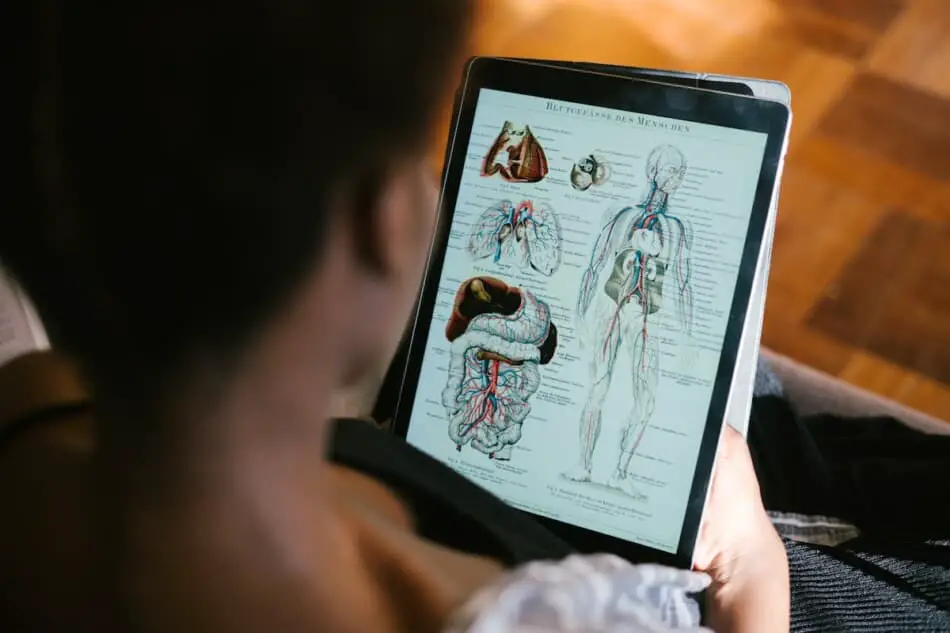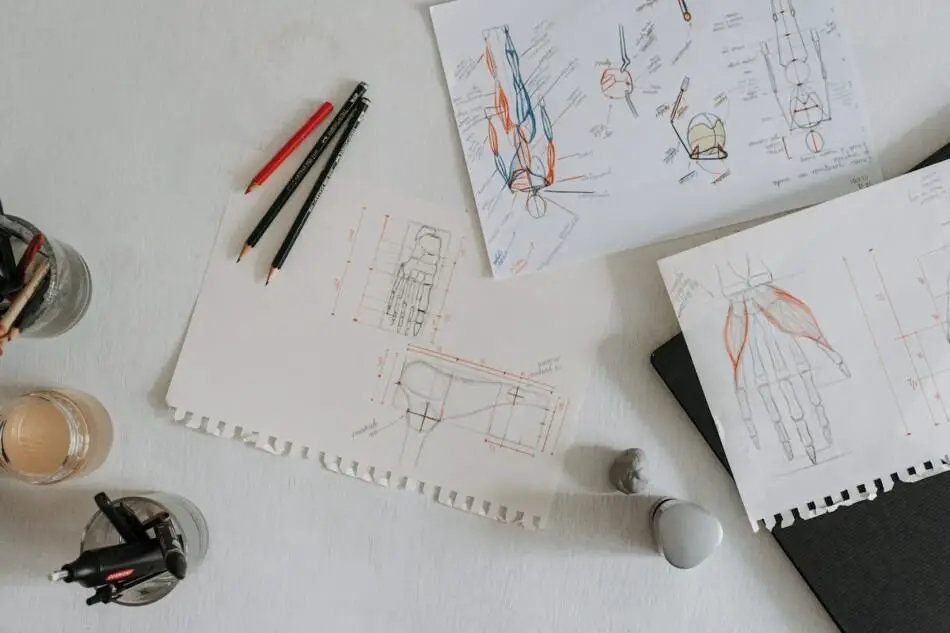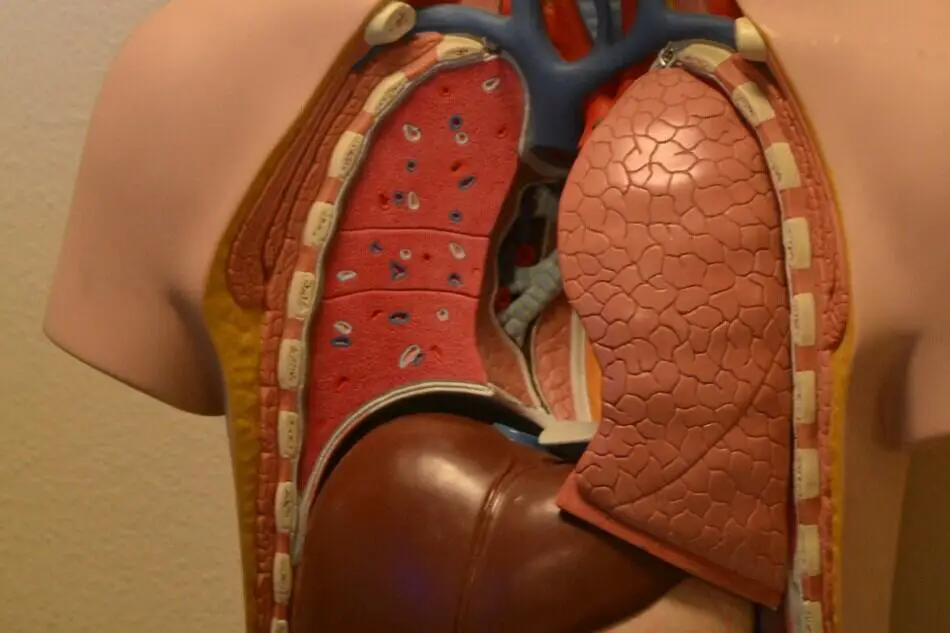These days we have the internet at our fingertips, allowing us to learn a host of different subjects on our own.
The subjects you can learn on your own are vast, and even complicated subjects such as anatomy can be broached.
Grandparents or parents may tell you that learning anatomy on your own is impossible.
If you are interested in anatomy, you will want some pointers on how to learn anatomy independently.
The best approach to stdying anatomy is to break it up into parts.
What Do You Need To Learn Anatomy On Your Own?
Before beginning your anatomy studies, you need to source:
- online materials
- a textbook
- three-dimensional apps
- quizzes
- flashcards
- anatomical models (optional)
- a microscope is useful
-> Read Also What Is An Autodidact?
Use Textbooks To Learn Anatomy
Many people want to learn only online in this modern era. There are several disadvantages to this when it comes to anatomy.
The first is that detailed, comprehensive anatomy courses are not freely available on the internet.
If you use only online sources, you will end up with fractured knowledge that may miss vital information.
Use a good Atlas of Anatomy textbook. There are several different ones available from online bookstores or academic book suppliers. These provide the most detailed, accurate information.
A textbook has the benefit of working systematically through the body.
This ensures that you proceed logically and cover all the information.

Use Three-Dimensional Apps To Learn Anatomy
Three-dimensional anatomy apps can be viewed on your phone, tablet, or computer. They help you visualize the structures better and can be of real value in learning.
There are some excellent apps available.
Flash Cards Help Memorize Anatomy
Flash cards are a useful way to test yourself and learn small bites of information. You can make your own flashcards or use commercial cards such as Netter’s Anatomy Flashcards.
There are free downloadable anatomy flashcards. You can also use Ken Hub’s guidelines on making your cards.
Build Models To Learn Anatomy
Buy kits to build models of a skeleton, an organ, or a part of the body. If the anatomical kits are too expensive, use molding clay or play dough to make models.
This method allows you to use a tactile learning mode, which is an excellent reinforcement and primary learning method for some people.
Take A Course On Medical Terminology
Many anatomical names are based on Latin terms. A short medical terminology course helps many students struggling with complex anatomical names.
A course on the basic origins of anatomical words allows the student to understand the words better. They are not just a meaningless jumble of syllables.

Learn Anatomical Terminology
Take time out before starting your anatomy studies to learn the anatomical terminology.
Anatomy is based on viewing the body in certain planes and sections, which all have specific terms. There are also names for different positions in the body, for example, caudal, ventral, and medial.
If you understand these terms, the textbooks and online notes will be much easier to understand.
It will also help you scientifically describe and locate organs or parts of the body.
Use Mnemonics To Memorize Anatomy
Mnemonics are words or phrases used as a memory trigger to remember a list or facts. They are very commonly used in anatomy due to the vast amount of information that must be covered.
Use mnemonics to help you memorize the elements of a body part, where muscles insert, or any facts you find hard to remember.
Use Anatomical Dissections When Possible
It is helpful to see anatomy in real life. We do not mean for you to become a grave robber when suggesting this!
Animal organs such as kidneys, liver, lungs, and heart are often available from butchers. Although they are not human, there is enough similarity for you to learn by dissecting these organs.
Remember to use gloves and a protective plastic sheet on the table. Wash everything well afterward.
Anatomy Quizzes Are Helpful
Online quizzes or asking a friend to question you helps check your knowledge. They also show which areas you need to pay careful attention to.

Use Audio Input To Reinforce Anatomy Knowledge
Some people are auditory learners and must have the information presented audibly to learn well.
One trick is to record the anatomical information and listen to this while traveling or doing other chores.
Learn The Microscopic Anatomy First
Almost all anatomy courses start with studying cells that make up tissue which in turn make up the organs.
You will need to learn the different cell types and how they differentiate and specialize for various functions.
You can use a textbook or online site for this. If you have access to a microscope, it is beneficial to look at samples of different cells.
How To Learn The Anatomy Of The Skeleton
Understanding and having a thorough knowledge of the skeleton is important when learning anatomy.
The position of organs, glands, and muscles is often referenced according to where they are in relation to skeletal landmarks.
Divide the skeleton into two sections while studying it. The axial skeleton is the skull, ribs, sternum, and spinal vertebra.
The appendicular skeleton is the structure of the shoulder girdle, pelvis, arms, hand, legs, and feet.
Use a good diagram to get an overview and begin understanding how the skeleton fits together.
Another good visual aid is a video that covers the basics of the skeleton with tips on how to remember the bone names.
Once you understand the basics of how the bones fit together, you should learn about the different bone types and their composition. When you understand this, take a more detailed look at the skeleton again.
Remember to consider the different types of joints. It is helpful to have written notes on how joints work.
Learn The Anatomy Of Muscles, Ligaments, And Tendons
When learning about muscles, tendons, and ligaments, it makes good sense to watch how they move and function using videos. Here are some useful ones:
Professor Dave explains the muscle system
Use a diagram that shows the insertion points of muscles, ligaments, and tendons. You will need to understand the structural anatomy of muscles, ligaments, and tendons.
This involves cellular biology and some physiology.
Professor Dave Explains is a useful Youtube channel to follow when understanding these concepts.
How To Learn Brain and Spinal Cord Anatomy?
Brain and spinal cord anatomy, called neuroanatomy, are some of the most complex parts of the body to learn.
The best way to approach brain anatomy is to first learn a basic overview of the most commonly referenced parts. Here are three good sites:
Once you have these concepts firmly in your mind, you can begin the deep dive into neurological structures. Most internet sites do not provide a logically ordered approach to in-depth neuroanatomy.
Choose a neuroanatomy textbook that can explain the complexities. It is helpful to browse through books to see which one is presented in a way that makes logical sense for you and is easy to understand.
Larger print and colorful pictures help when grappling with tongue-twisting names and difficult concepts.

The Anatomy Of Nerves And The Peripheral Nervous System
The anatomy of nerves and the neurological system is a complex mix of biological structure, neurochemistry, and a good overview of body parts.
This area of anatomy is complex and difficult to memorize as nerves penetrate the entire body. There are different types of nerves broadly divided into two groups, afferent and efferent nerves.
Understanding how these nerves are structured and where they are in the body is critical in anatomical studies.
You can get a relatively good overview of the anatomy of nerves and the peripheral nervous system online, but you will need a textbook to learn it fully.
Anatomy of The Mouth, Nose, And Pharynx
The mouth, nose, and pharynx are one of the easier anatomical regions to learn. We can see into our mouths and partway up our noses, which helps us identify parts.
Use a textbook or online site to help you learn the nasopharynx and oropharynx. It is useful to link the parts to their function to aid understanding.
The Best Way To Learn The Anatomy Of The Lungs
Lung anatomy makes logical sense, and most people have some basic knowledge of what the lungs look like and how they work.
This previous knowledge makes it an easier topic to learn. If you are having trouble learning a complex area, encourage yourself by studying the lungs – you will whizz through the material.
Remember that the diaphragm muscle that forms the bottom of the chest cavity is critical for the functioning of the lungs, so include this in your anatomy studies of this area.

The Heart And Circulatory System Anatomy
Heart anatomy surprises some people who are not familiar with it. They think of it fairly simplistically, but it has some interesting structures.
As one of the vital organs in our bodies, the heart has many anatomical features situated within the muscle which keep the heart functioning correctly.
The heart is one of the most popular anatomy topics on the internet, and hundreds of sites and videos are available.
Once you have completed your study on heart anatomy, move on to the circulatory system. You will need to understand the various types of blood vessels and how they are constructed.
The structure of blood vessels affects their functioning, making it crucial to understand them well.
The structure of blood is an absolutely essential study in anatomical learning.
Blood is the life force that keeps our bodies functioning, and it is important to know about white blood cells (leukocytes), red blood cells (erythrocytes), platelets, and plasma.
There are several other cell types that are foudn in blood that assist with the immune system.
Learning The Gastrointestinal System Anatomy
Most primary school curriculums teach basic knowledge of gastrointestinal anatomy, giving people some knowledge before they begin this quest.
The gastrointestinal system is one that is best learned by getting a good overview and then delving further into the details.
A thorough study of the anatomy of valves, the lining of the gastrointestinal system, and the structure of the walls is necessary.
The microscopic anatomy of the gastrointestinal system is vital to know as the gut does not function without it.
Studying The Anatomy Of The Kidneys And Urinary Tract
The kidneys and urinary tract anatomy are referred to as nephrology and urology.
Some students are surprised at the complexity of kidney anatomy.

Learning The Anatomy Of The Liver
The anatomy of the liver can be learned through the use of books or online sites. Ensure that the sites go into enough detail; otherwise, use a reference textbook.
The liver has numerous lobes, fissures, and ducts which must all be learned. A liver is held in place by various ligaments, which you need to know.
Anatomy Of The Reproductive System
Both the female and male reproductive systems must be covered in your anatomy studies.
The female reproductive system must include the vagina, cervix, uterus, ovaries, fallopian tubes, breasts, and associated glands.
The human male reproductive system includes the penis and the complex structure of the testicles that allow for sperm production.
Test your knowledge of reproductive anatomy by labeling diagrams and completing a quiz.
Anatomy of The Upper and Lower Limbs
Our arms and legs are not critical for survival, but they are body parts that give us quality of life and make our lives easier.
When studying the anatomy, the bones, muscles, joints, blood vessels, and nerves must be considered in detail.
Much of this information may have been learned in previous sections, but putting it together into a unit for each limb is useful.
Study The Lymphatic System Anatomy
The lymphatic system refers to the glands and lymph vessels that act as a messaging system throughout the body.
It is important to learn the anatomy of this system. The structure and position of glands should be learned. During this section, you must look at the constituents of lymph fluid.
The position of glands can vary slightly between individuals, so using palpation to find glands during your studying can be tricky.
The lymphatic system is linked to the circulatory and immune systems.
The Anatomy Of The Skin

The skin is regarded as an organ in anatomy study. It has an amazing structure that can be learned through models and pictures.
When studying the skin anatomy, ensure you cover all dermal layers, subcutaneous tissue, glands, specialized cells, and hair.
Here are some sites to use in your learning:
If you have access to a microscope, make a scraping of your skin to view the cells. This will aid you in learning the skin anatomy.
Understanding The Anatomy Of The Eye And Ear
Some wonderful eye models can be bought online or from educational stores. You can combine this with a theory source on eye anatomy.
The anatomy of the ear is not difficult to understand, but it is almost inseparable from the physiology or functioning when you are learning.
The ear is used for hearing and balance, and you can broaden your anatomical knowledge by understanding the function.
Some Extra Tips On Learning Anatomy
Linking anatomical structures to clinically interesting points helps to create memory triggers or pathways that assist learning.
Students may also benefit from linking a body part to a pathology that occurs when the part is not functioning.
Anatomy is often understood better if you learn physiology at the same time. Physiology is the complete study of the functioning of the body.
If you struggle to learn a particular part of the body, try to learn it alongside the physiology, and you may find it easier to remember the anatomy.
-> Learn More about Self-Learning vs. Classroom Learning: Which Is Better?
Disadvantages Of Learning Anatomy By Yourself
It is possible to learn anatomy theory on your own without a teacher. Transferring the knowledge into practice can be difficult. Many body parts are confusing to identify when seen in real life.
Anatomical pictures of the brain show clearly demarcated areas that align with specific functions. In reality, a living brain is a gelatinous substance, and a cadaver brain is a grey mass.
There are no clear boundaries to indicate or identify different areas.
A fibula is a much smaller bone than you would imagine and could easily be mistaken for a rib. You need to carefully examine the anatomical markers to identify it correctly.
There are many examples that underline the point that practical exposure is critical in learning to apply your anatomy theory.
If you are learning anatomy outside of a structured course, you will not be qualified to do anything with your knowledge.
Most careers that include anatomy require the person to have a diploma or degree.
-> Learn more about the 7 best websites for self-learning
Conclusion
Learning anatomy alone can be challenging, but it is interesting material. It is helpful to gain access to any practical anatomical exposure possible.
Combining practical knowledge and anatomical theory consolidates your knowledge.
It is helpful to use multimodal learning to allow you to experience anatomy through visual, tactile, kinesthetic, and even auditory means.
References
- https://www.nursingtimes.net/clinical-archive/orthopaedics/skeletal-system-2-structure-and-function-of-the-musculoskeletal-system-24-02-2020/
- https://www.innerbody.com/image/skelfov.html
- https://www.uc.edu/content/dam/uc/ce/images/OLLI/Page%20Content/THE%20SKELETAL%20SYSTEM.pdf
- https://www.youtube.com/watch?v=1UHLY8L7eSs
- https://www.betterhealth.vic.gov.au/health/conditionsandtreatments/bones
- https://www.youtube.com/watch?v=f-FF7Qigd3U
- https://www.youtube.com/watch?v=21bgO104QVU
- https://www.youtube.com/watch?v=21bgO104QVU
- https://oxfordmedicaleducation.com/medical-mnemonics/anatomy/
- https://teachmeanatomy.info/
- https://www.hopkinsmedicine.org/health/conditions-and-diseases/anatomy-of-the-brain
- https://dana.org/article/neuroanatomy-the-basics/
- https://mayfieldclinic.com/pe-anatbrain.htm
- https://www.physio-pedia.com/Lung_Anatomy
- https://www.kenhub.com/en/library/anatomy/anatomical-terminology
- https://www.uc.edu/content/dam/uc/ce/images/OLLI/Page%20Content/THE%20URINARY%20SYSTEM.pdf
- https://www.simplypsychology.org/peripheral-nervous-system.html
- https://www.kenhub.com/en/library/anatomy/liver
- https://www.kenhub.com/en/library/anatomy/lymphatic-system
- https://training.seer.cancer.gov/melanoma/anatomy/
- https://www.umkelloggeye.org/conditions-treatments/anatomy-eye
- https://teachmeanatomy.info/head/organs/ear/






